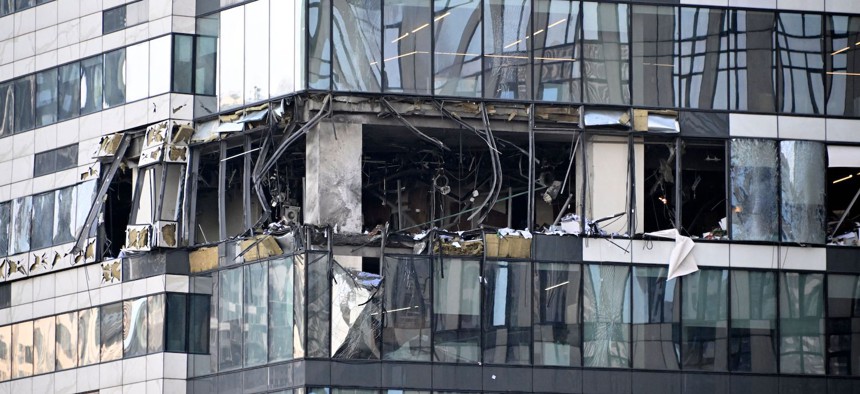LAUREN C. WILLIAMS

Electronic warfare’s role in Russia’s war on Ukraine has pushed the U.S. Army to tweak its modernization plans to keep pace with the ongoing threats, the leader of Army Futures Command said Monday.
“We’ve got a moral responsibility to learn from this horrific war—to include the one they just started 72 hours ago—and I take that very seriously,” Gen. James Rainey told reporters at the annual Association of the U.S. Army conference in Washington, D.C. “I haven't seen anything that tells me our current modernization efforts are off track,” he said, adding that technological disruption seen in Ukraine has been unprecedented in speed and scale—with EW being a prime example.
Getting Army modernization plans right is complicated, he said, and so far, everything has fallen into place. But the nature of electronic warfare means plans must be tweaked.
“EW’s growth and scale—the iterative nature of it—is going to cause some adjustments,” Rainey said. “You can't field an EW capability. You have to have a capability that's EW resistant and you can have offensive EW capability that's configurable, because the enemy's gonna make adjustments.”
Rainey said EW “isn't impacting any major modernization,” but it’s something the Army has learned about as the war unfolds. The service is also still figuring out the effects of being in “constant contact,” whether it’s social media, the electromagnetic spectrum, or direct and indirect fire, he said.
That constant contact has already contributed to the Army making its command posts more mobile.
“I don't think the future's in big standing command posts, so that's driving our modernization. We were already modernizing our network and our command and control system, but we're even taking it to the next level. We don't think any kind of command post is static,” he said. “Another one is towed artillery. Ten- to 15-minute displacement times [are] not going to work against an enemy. So we still need to modernize our fires, but we need to continue to look at robotic solutions to artillery.”
Doug Bush, the Army’s chief buyer, said the war has affected the service’s modernization plans, but more as an enhancement than a subtraction. For example, the Army started shifting its funding for counter-unmanned aerial systems in the fiscal 2023 budget so it can field the capabilities across the entire service “with what we have now, even if it’s not perfect.”
“So there are some areas where we're already changing, but we call them at this point additive to our plans; we're not taking anything away,” Bush said.
No comments:
Post a Comment